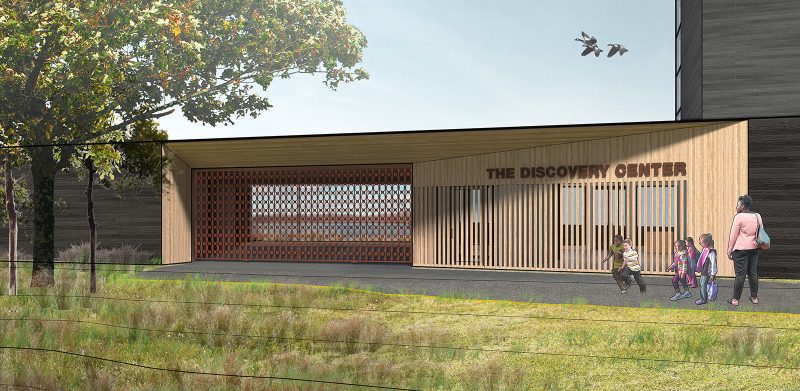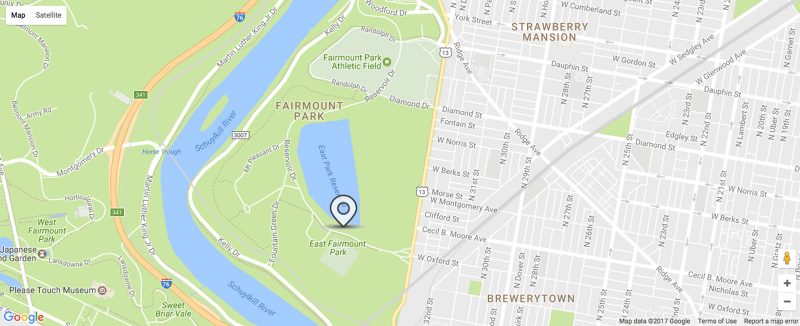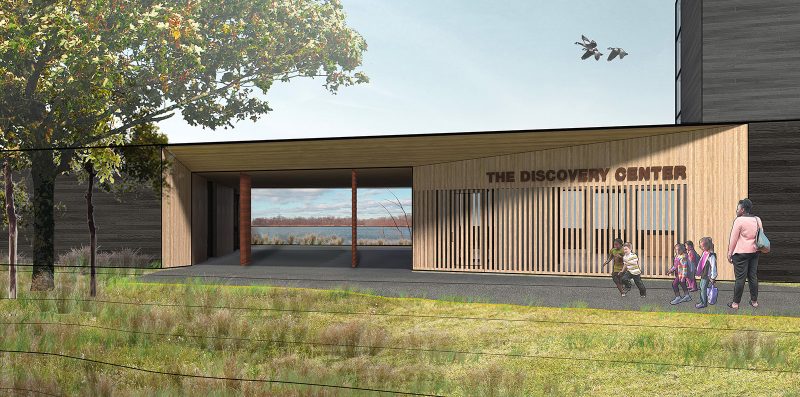
The Discovery Center led the agenda of May’s Art Commission meeting. The Discovery Center will be a public park with an interpretive center that re-opens a water supply basin (or reservoir) in Fairmount Park that was closed in the 1970s. Since its closure, the reservoir has become a bird sanctuary, and the proposed Discovery Center park will preserve that ecosystem. The building itself will house the private non-profit organizations Outward Bound and Audubon Pennsylvania. But in the wake of last year’s Lantern Festival gate around Franklin Square Park, is this another example of the City inappropriately privatizing a public space?

From reservoir to habitat
Built in the 1890s, the East Park Reservoir at 33rd and Oxford Streets was once a major supplier of the City’s water. When Philadelphia’s population went into dramatic decline in the 1970s, the Reservoir was decommissioned, and the Water Department built a perimeter fence as a safety precaution. The closing of the reservoir coincided with nearby Strawberry Mansion’s decline of shopping districts and increase in crime. For many older Strawberry Mansion residents who remember enjoying the Reservoir in their younger days, the fence marked another sign of a struggling neighborhood.
Enter Audubon Pennsylvania, the local chapter of the National Audubon Society, which noticed that the abandoned West Basin (one of four sections in the East Park Reservoir) had become a major nesting area for migratory birds flying south along the eastern seaboard. In 2009, Audubon PA partnered with Outward Bound, a leadership training and outdoor learning program, to protect this habitat by building a facility for science and research, an interpretive center, and new office space for both organizations, which will comprise the Discovery Center.
Eight years of planning for the Discovery Center involved working with architects DIGSAU and Ground Reconsidered, the Water Department, Parks and Recreation, the Strawberry Mansion Community Development Corporation, and the Fairmount Park Conservancy. Audubon and Outward Bound have raised $17 million from private sources like the William Penn Foundation and the Otto Haas Charitable Trust, but also from State and City sources.
Competing functions
But how will the project manage its many functions as a public park, a sanctuary for birds, and the private offices of two organizations? As Inga Saffron points out in her article on last year’s Lantern Festival, “parks exist to provide city-dwellers with a green respite, not do yeoman’s work for the economy.” With proposals for billboards in neighborhood parking lots, and private companies purchasing naming rights to SEPTA stops, private-public partnerships are ominously infringing on everyday life.
For the Discovery Center, Audubon PA and Outward Bound negotiated a 40-year lease for the East Park Reservoir land owned by the City of Philadelphia, with funders that include the City and the State. Public funding, and a lease on public land, means the site must remain publicly accessible. The architects DIGSAU compared the design challenge to “a mini airport,” where security and access are equally important. Much of the 14,000-square-foot Discovery Center remains closed to the public and reserved for educational programs. Public spaces include an interpretation center, community spaces, and a planned trail network. The best compromise for this public/private relationship is the Artwork commissioned by the City’s Percent for Art Program.

Open gates
Philadelphia artist Warren Holzman presented a design for hand-wrought iron gates that incorporate the compromise between public and private functions of this site. Made of hand-wrought iron, the gates’ design draws its motifs from common forms found in and around the Reservoir varying from biological to botanical and ornithological. The gates pivot open, so that when the park trails are open, the gates remain entirely out of view. The building design also allows a visitor to enter the park without entering any buildings. So that even when the gates are closed, visitors will still have a full view of the reservoir. The gate’s physical design, as well as its functional details, both acknowledges the site, and acts as the metaphor for the design team’s commitment to open access.

But for advocates of public space, it’s alarming to see this trend toward public-private partnerships throughout Philadelphia. The Discovery Center is beholden to many audiences—to the private organizations, to public trail users, to birds who nest here—but it serves them well. The Art Commission commented on the high level of craftsmanship and design aesthetic of Warren Holzman’s artwork. For the design team, they Commission pushed them to improve signage indicating the entrance to the park. Commissioner Carmen Febo San Miguel emphasized that open access is crucial for marginalized, low-income communities like Strawberry Mansion. If public-private partnerships are the new normal for our cash-strapped City, the Discovery Center sets a high bar for a thoughtful partnership. But actions speak loudest. After the site is open, and the organizations have moved in, the metaphor of the open gate must not just be symbolic, but be translated in practice by both organizations who must balance their need for security, and guarantee open, public, and democratic access to our public parks.
The Discovery Center is expected to open in Spring 2018.
Works Referenced:
- http://civiccommonsphl.myphillypark.org/projects/discovery-center/
- http://www.philly.com/philly/news/20151216_Long-dark_East_Park_Reservoir_gets_new_life.html?photo_3
- http://planphilly.com/eyesonthestreet/2015/08/07/east-park-s-hidden-lake-habitat-a-site-for-discovery
- http://discoveryphila.org/
- http://hiddencityphila.org/2015/02/a-winters-walk-around-east-park-reservoir
- http://planphilly.com/articles/2017/04/05/art-commission-greenlights-design-for-discovery-center-in-strawberry-mansion









